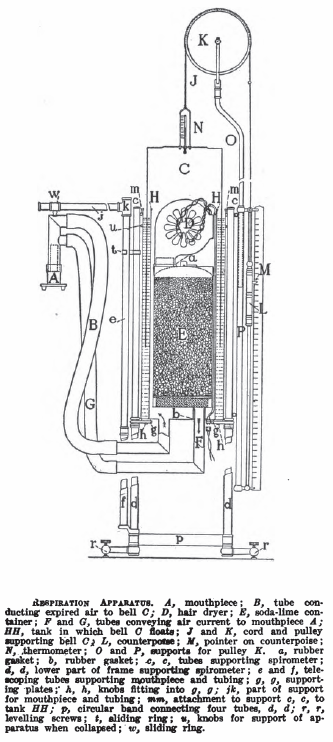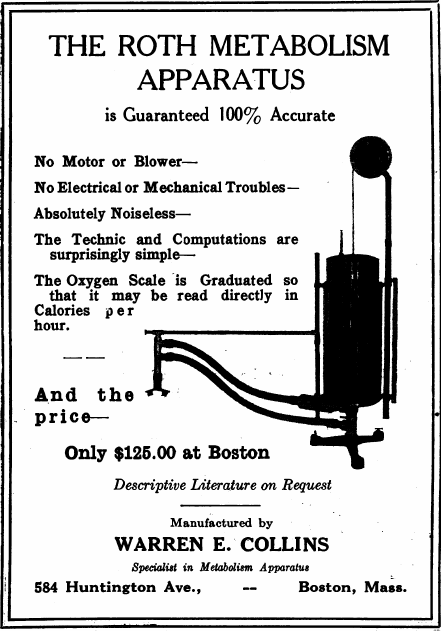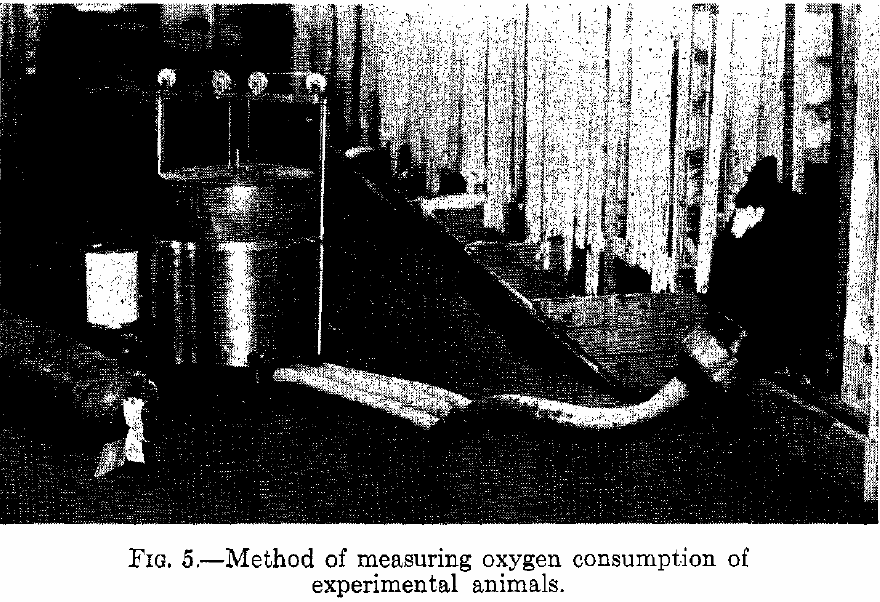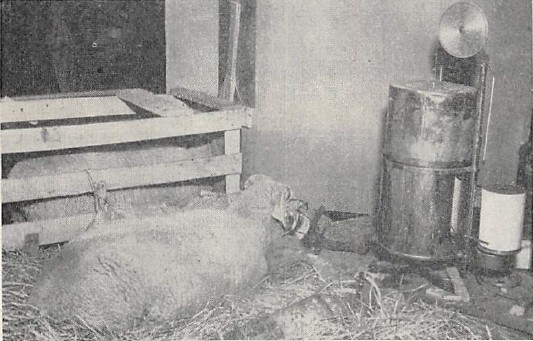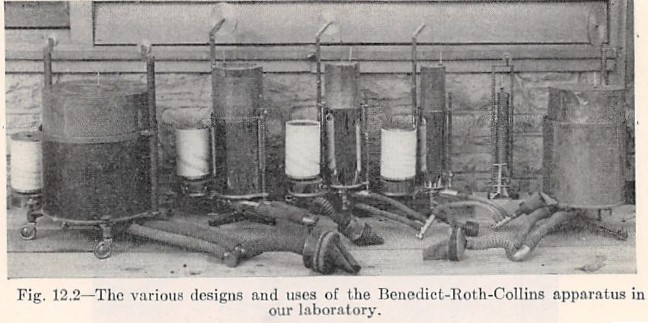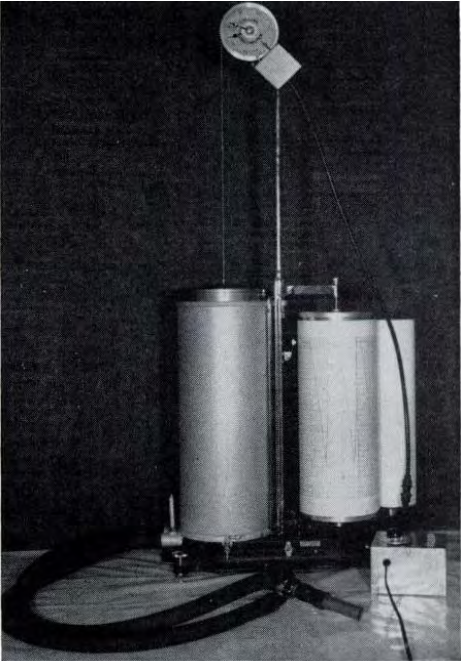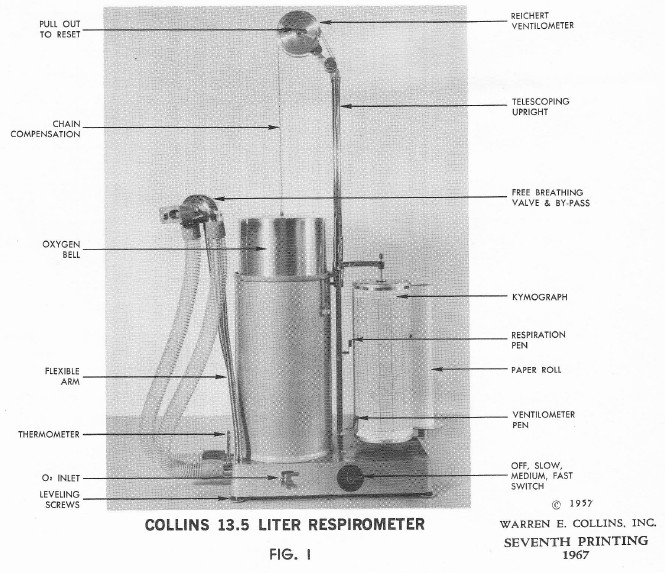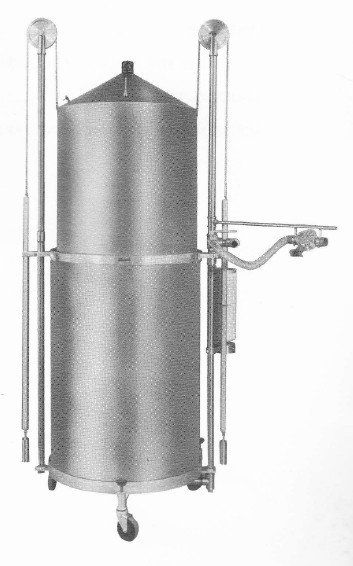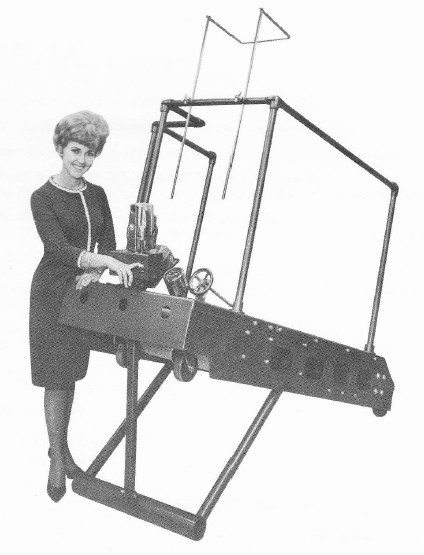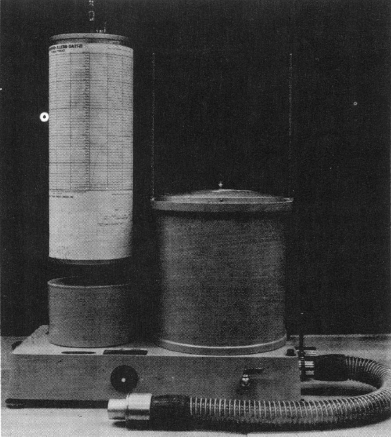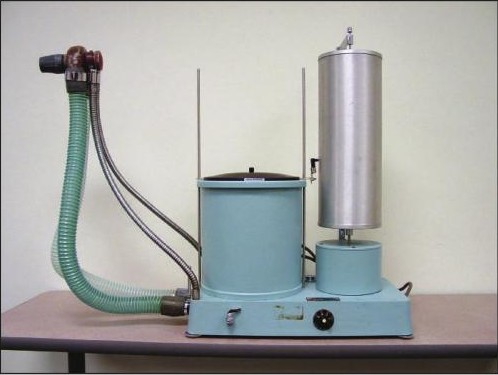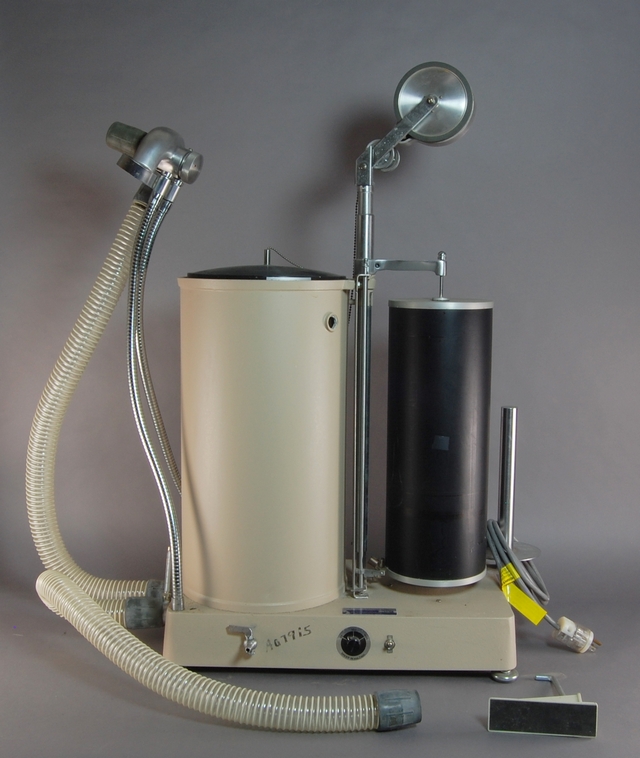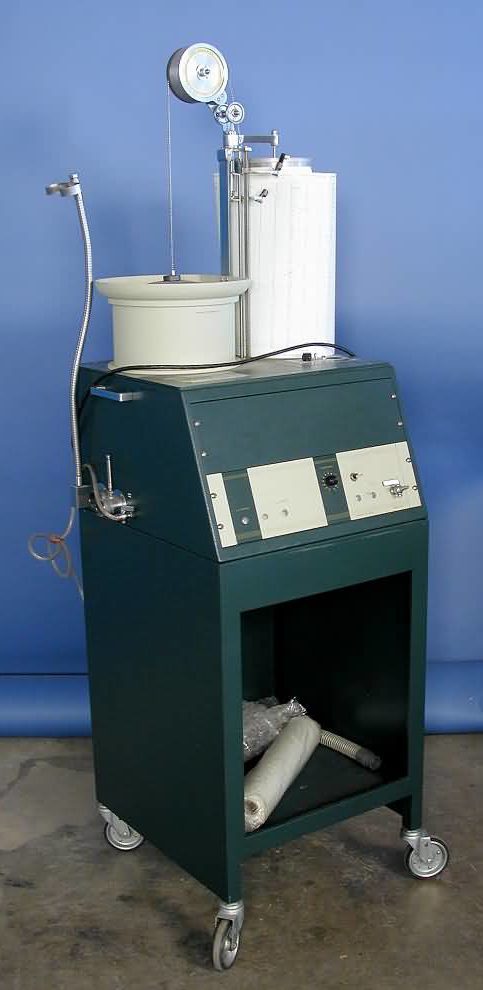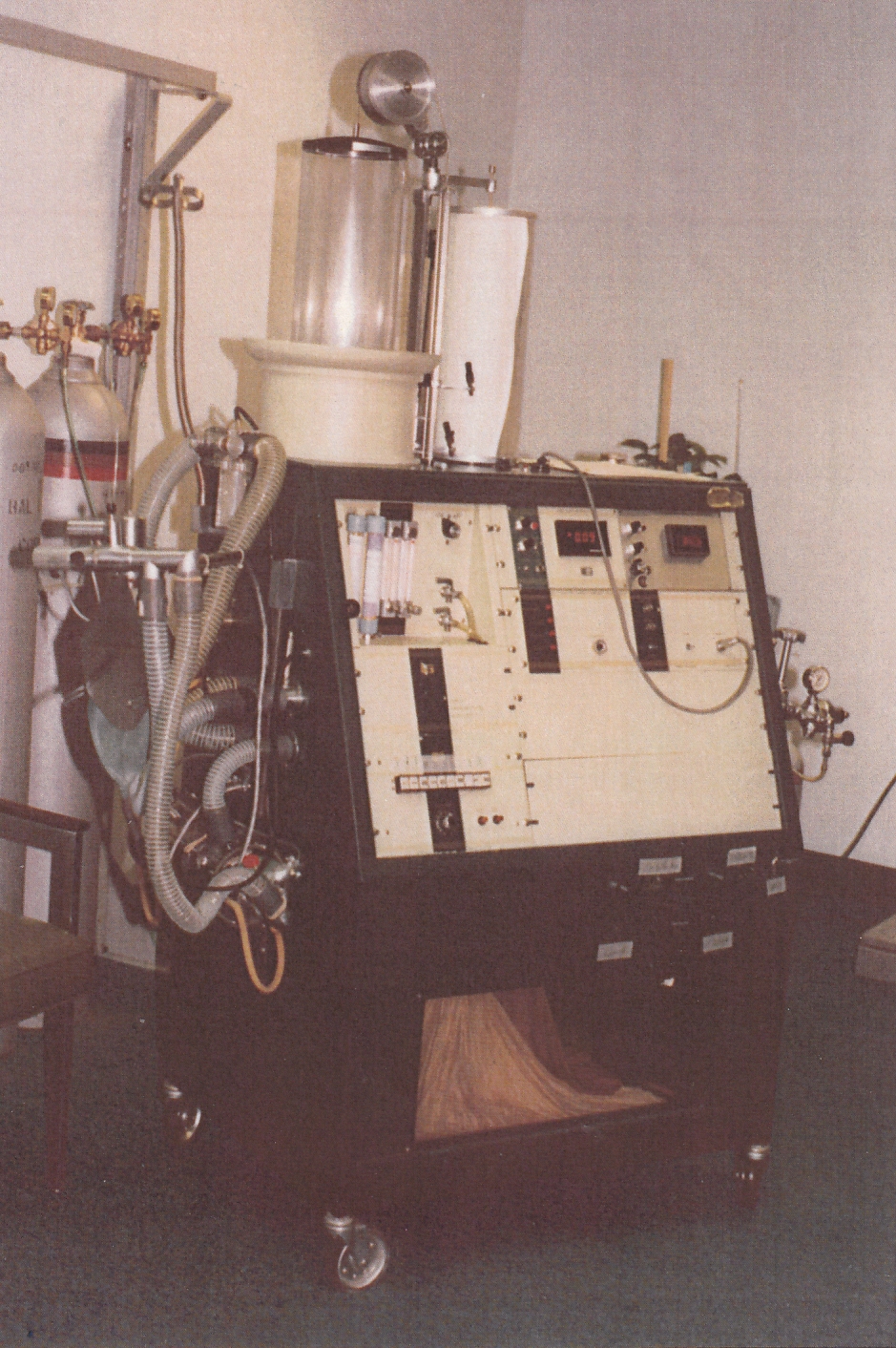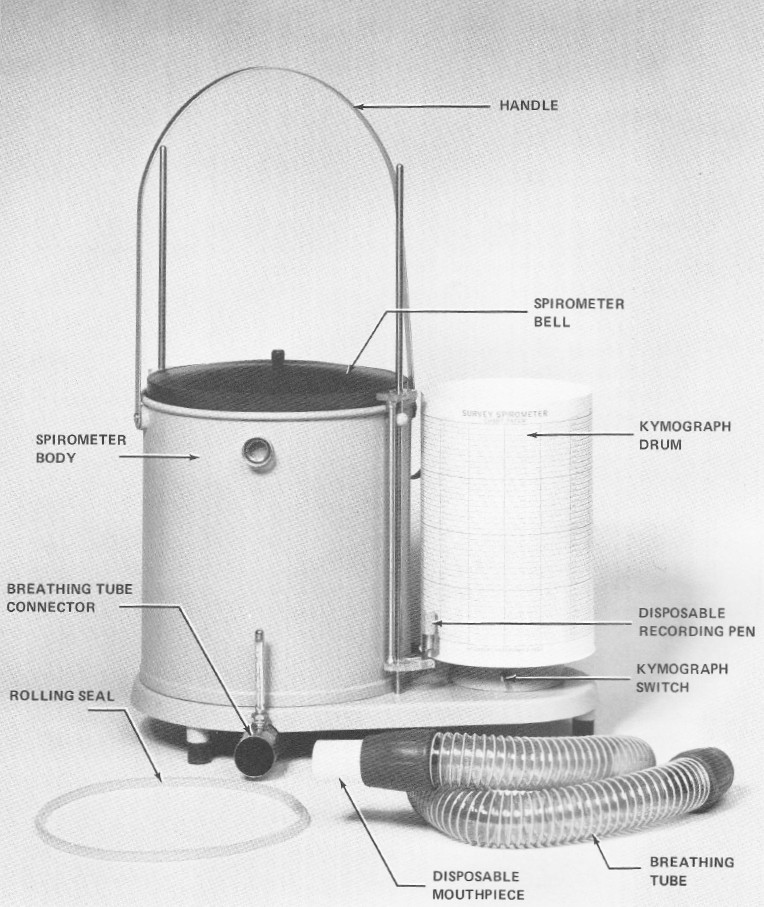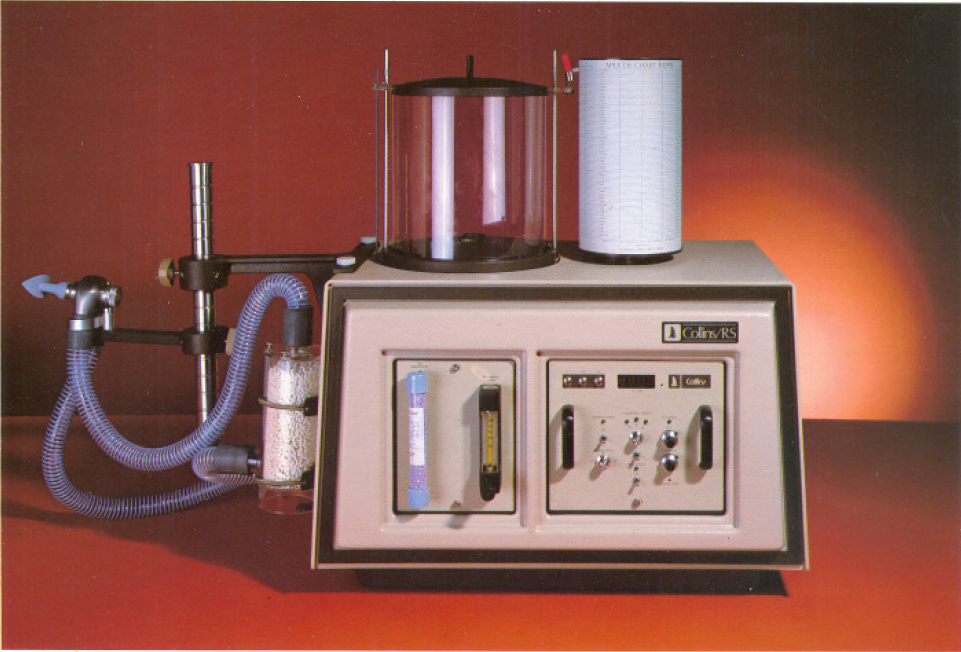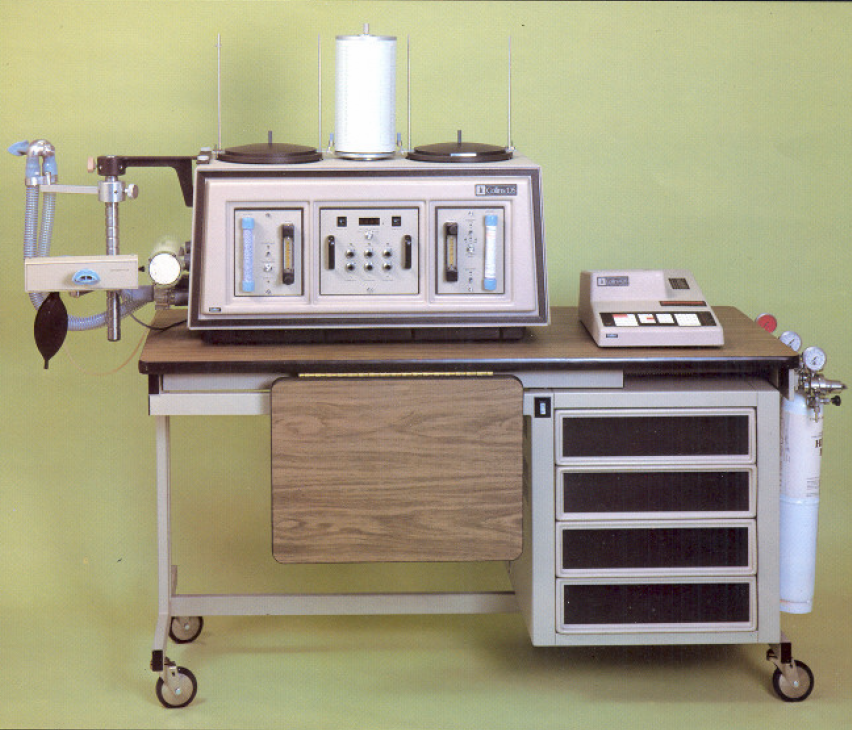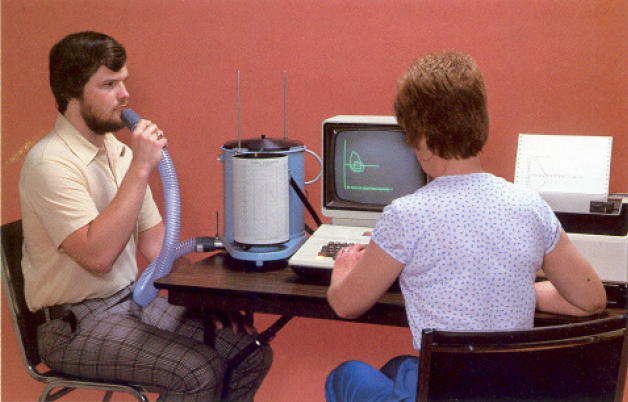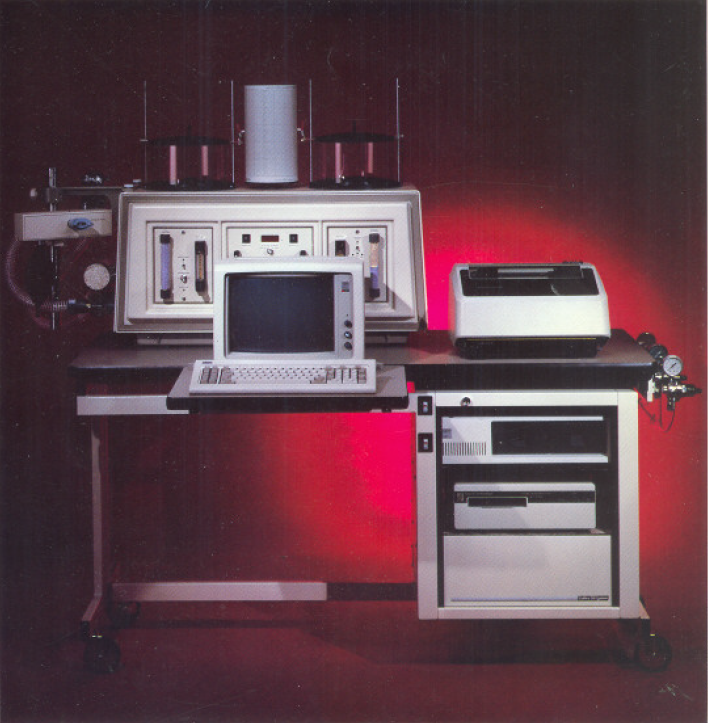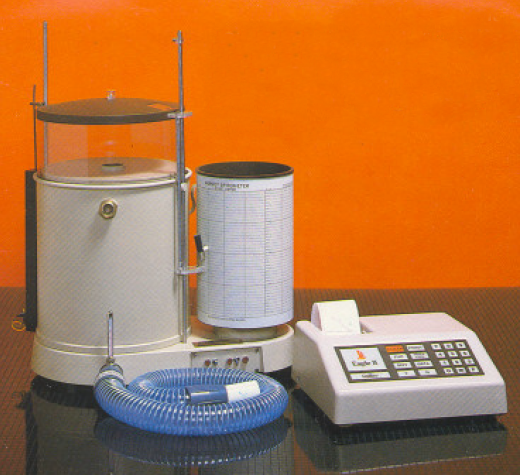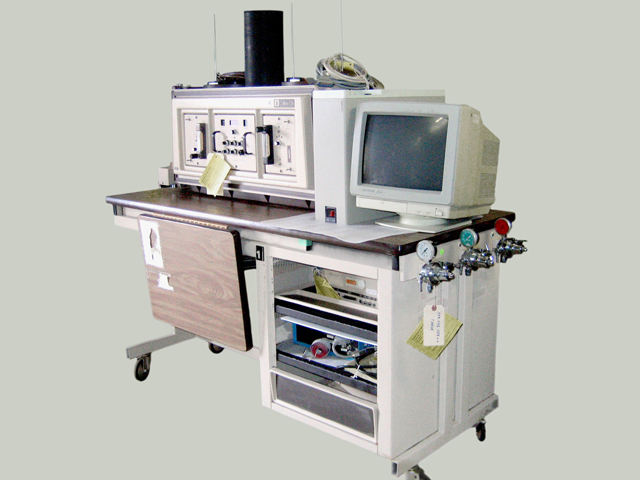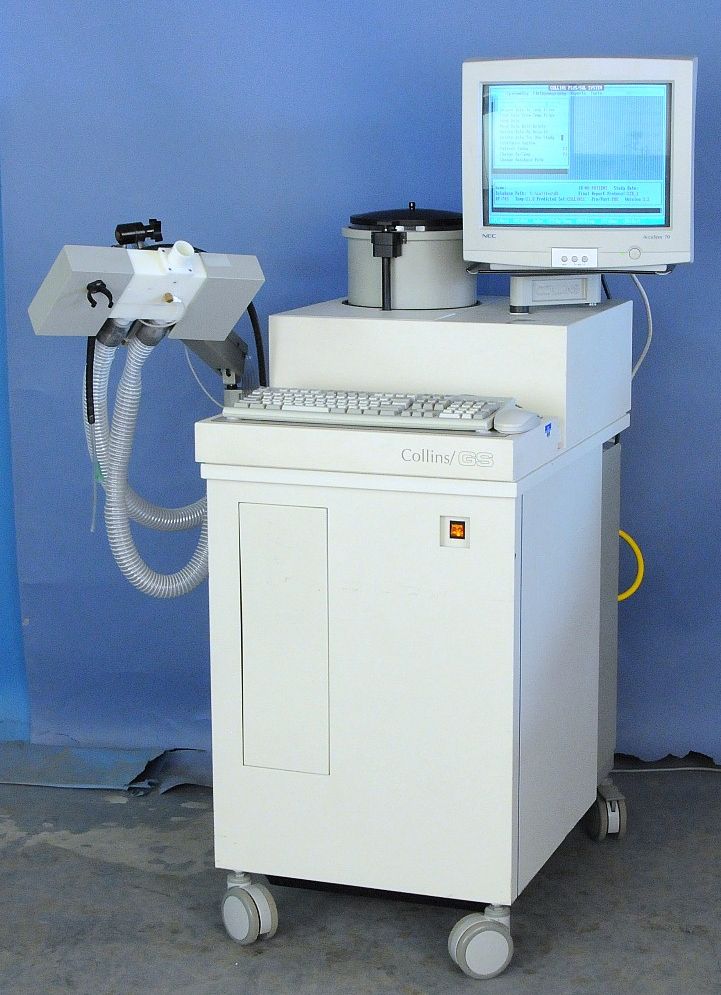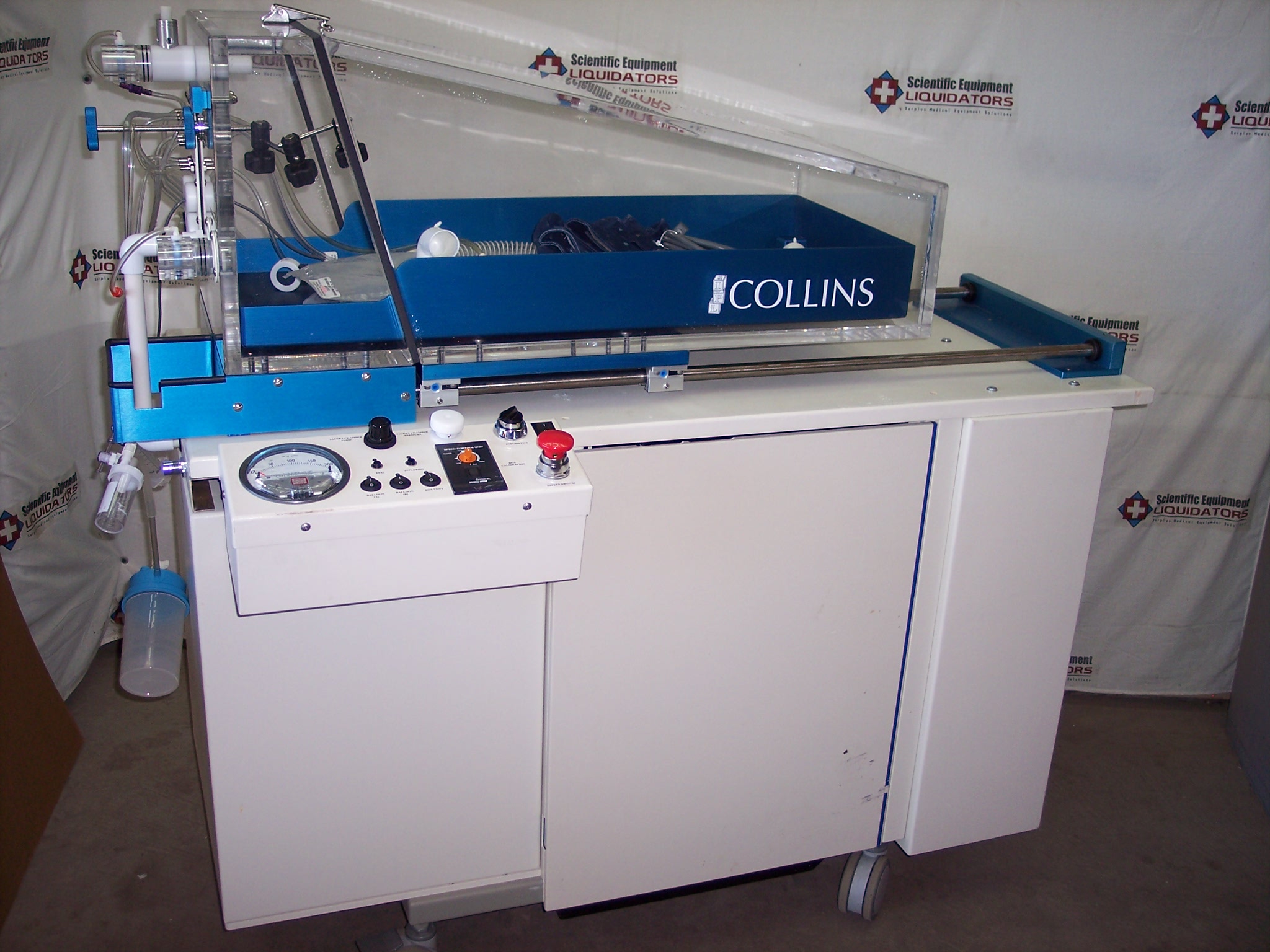Warren E. Collins was the principal mechanical engineer for the Carnegie Nutrition Laboratory in Boston, Massachusetts, and worked with Dr. Francis G. Benedict for many years developing basal metabolism systems. He started the Warren E Collins company in 1920, which was located at 555 Huntington Avenue, Boston until 1965 when the company moved to 220 Wood Road, Braintree, Ma. In the mid-1990’s it was acquired by Ferraris Medical, a European conglomerate, and then by NSpire in the mid-2000’s. Throughout its history Warren E. Collins Co., was a major manufacturer of basal metabolism systems, spirometers and pulmonary function testing systems.
Benedict-Collins Spirometer, 1922. Manufactured by W.E. Collins from a design from Dr. Francis Benedict. From: Basal Metabolism: Its determination and Application. FB Sanborn. Page 119. Published 1922.

Collins Gasometer, 1922. Found in Surgery, Gynecology and Obstetrics, Volume 35, December 1922, page 16.
Collins Advertisement, 1924. From the Canadian Medical Journal, 1924, probably the January Issue
Collins Spirometer with clockwork kymograph, 1934. Taken from: Kansas State College of Agriculture and Applied Science. Technical Bulletin 36, June 1934. The relation of Phosphorus deficiency to the utilization of feed in dairy cattle.
Benedict-Roth-Collins Spirometer, 1945. Being used to measure the basal metabolism of a sheep. From Bioenergetics and Grown by Samuel Brody, Published by Reinhold Publishing, NY, 1945. Chapter 12, page 318. Found on the website BeefEfficiency.org.
Benedict-Roth-Collins Spirometer, 1945. Being used to measure the basal metabolism of a cow. From Bioenergetics and Grown by Samuel Brody, Published by Reinhold Publishing, NY, 1945. Chapter 12, page 318. Found on the website BeefEfficiency.org.
Benedict-Roth-Collins Spirometers, 1945. From Bioenergetics and Grown by Samuel Brody, Published by Reinhold Publishing, NY, 1945. Chapter 12, page 317. Found on the website BeefEfficiency.org.
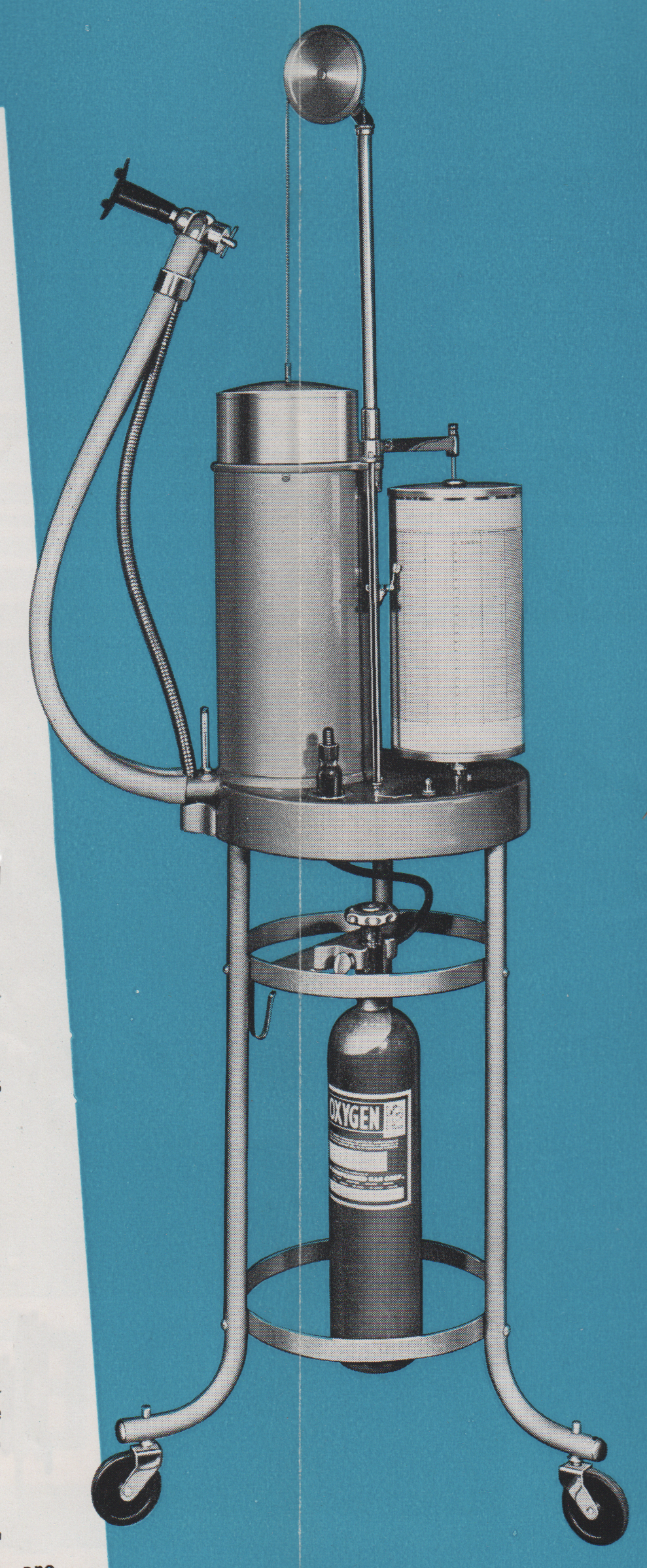
Collins Benedict-Roth Metabolism Apparatus, 1949. From an advertising brochure from Warren E. Collins, Co.
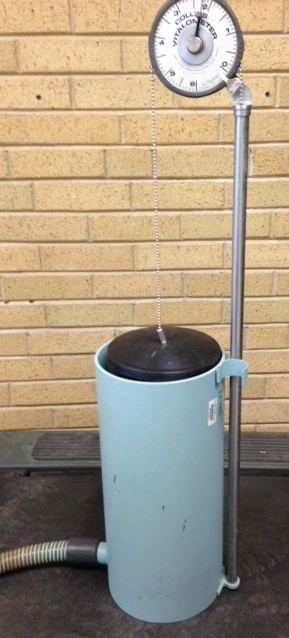
Collins Vitalometer, circa 1950. Over 60 years old and still in use. Collins spirometers are indestructible. Photo courtesy of Gary A. Bulla, Ph.D., Department of Biological Sciences, Eastern Illinois University.
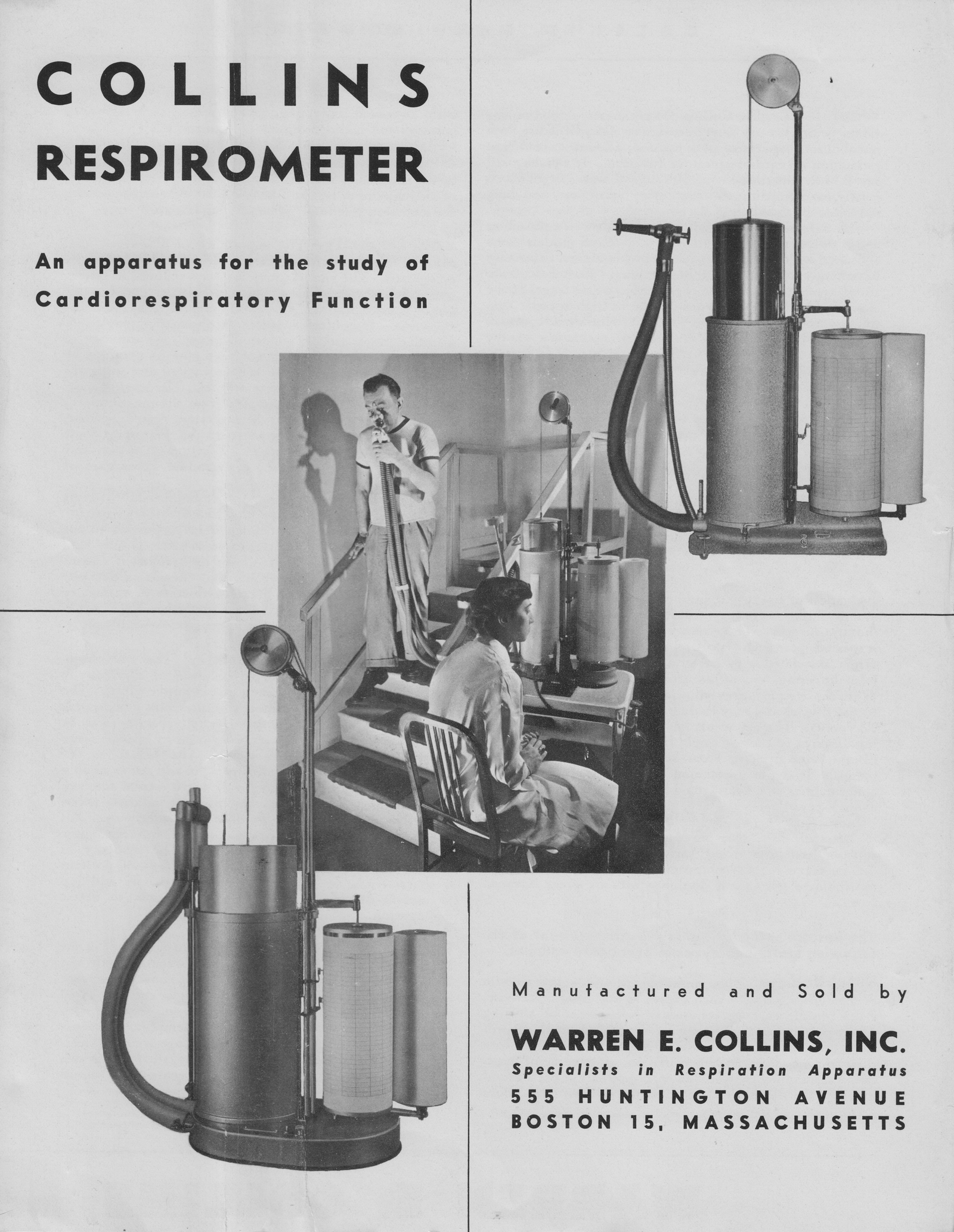
Collins Respirometer, 1952. From a sales brochure for the Collins Respirometer, printed in 1952.
Collins Respirometer, 1952. The dial on the pulley above the spirometer bell is for a timer that measured FEV1. From: Breve Storia illustrata della spirometria by Dott. Andrea Innocenti
Collins Respirometer, 1959. From: R.M. Cherniak. The oxygen consumption and efficiency of the respiratory muscles in health and emphysema. J Clin Invest 1959, page 494.
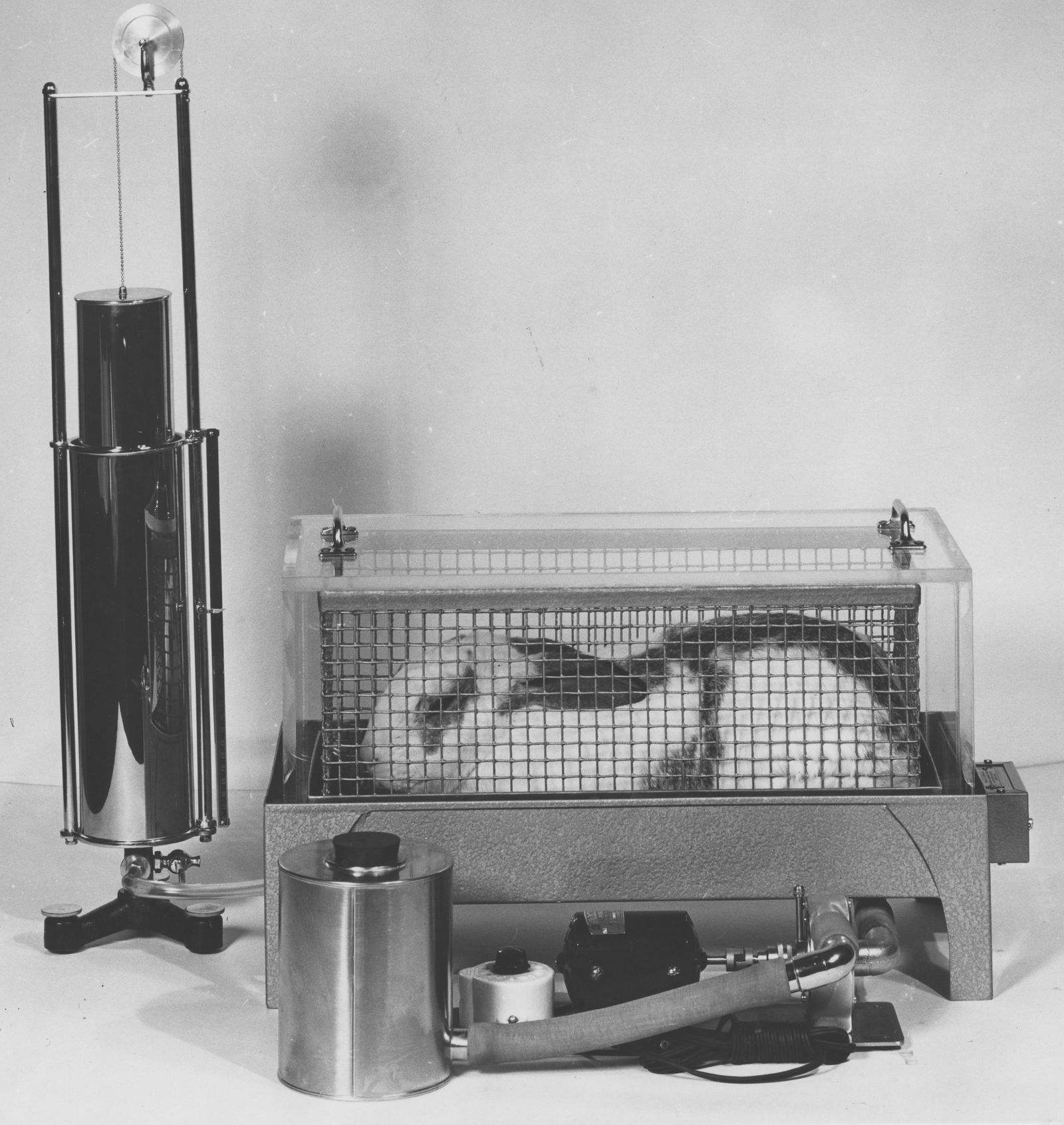
Collins 1 Liter Animal Spirometer Metabolism System, circa 1966. From an undated publicity photo.
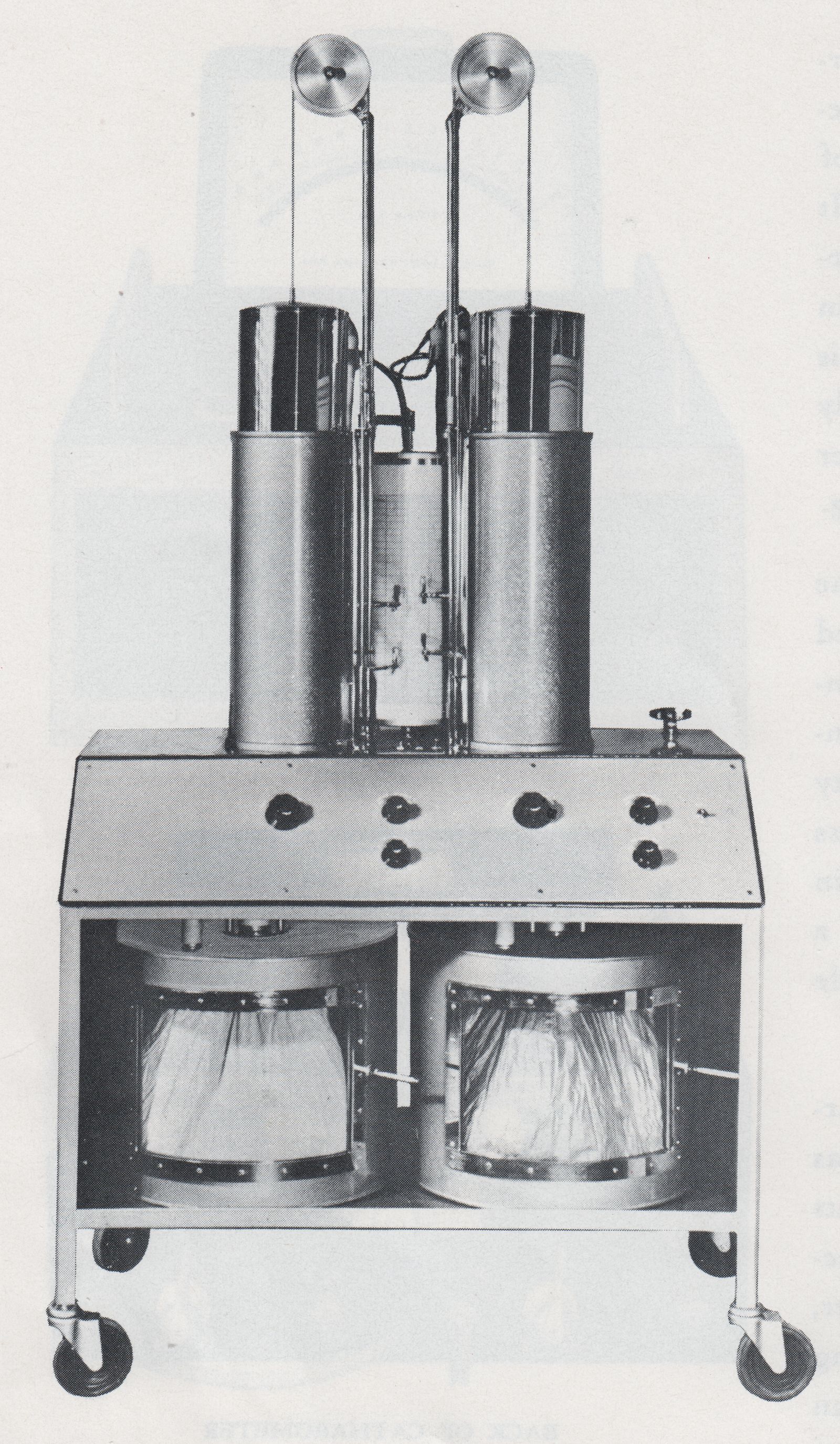
Collins Double Bronchospirometer, 1966. Used with a double lumen endotracheal tube to measure lung function in each lung separately. From ‘A Catalog of Pulmonary Function Equipment and Accessories’, W. E. Collins Inc., page 10.
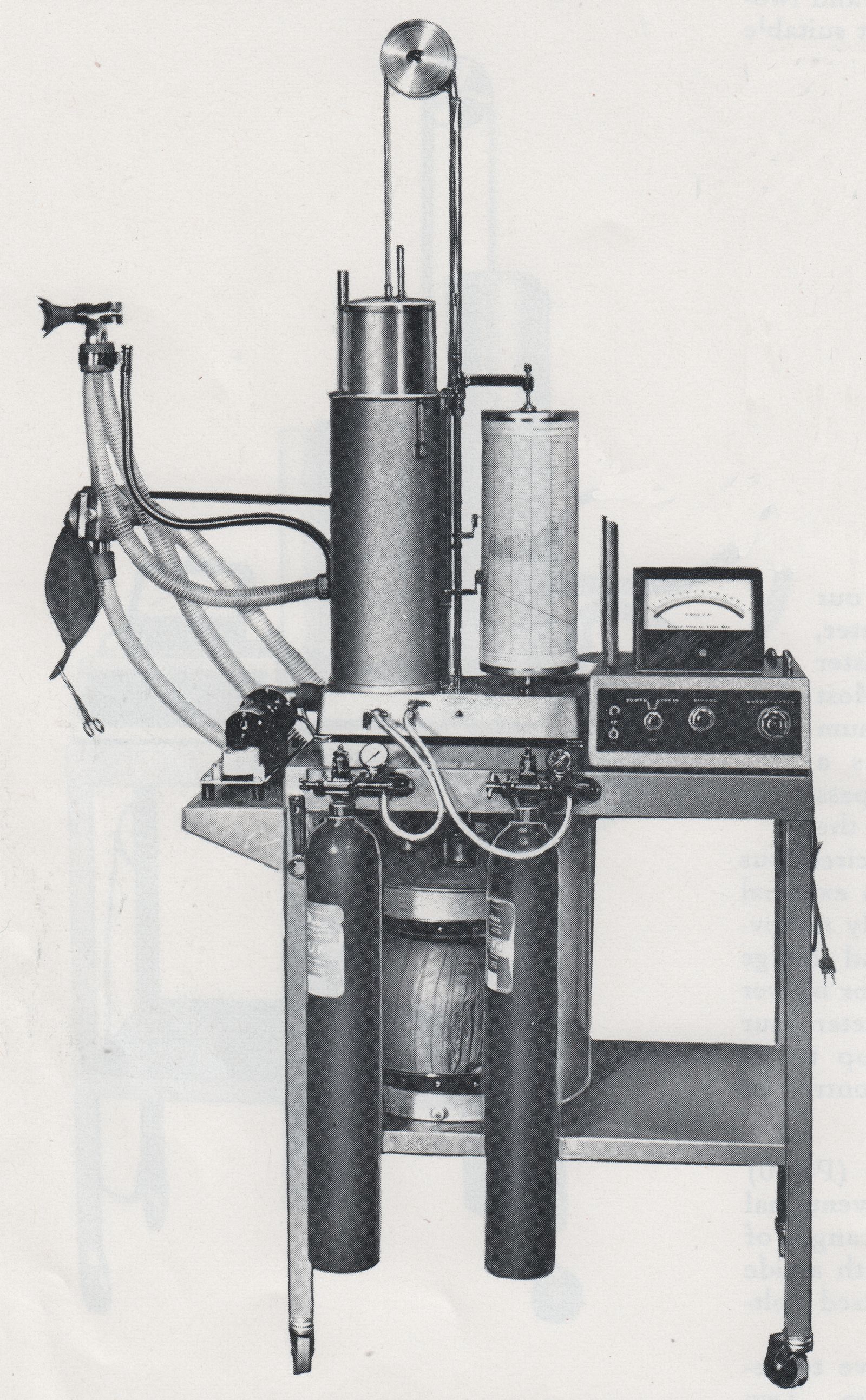
Collins Combination Helium Residual Volume and Single Breath DLCO system, 1966. From ‘A Catalog of Pulmonary Function Equipment and Accessories’, W. E. Collins Inc., page 8.
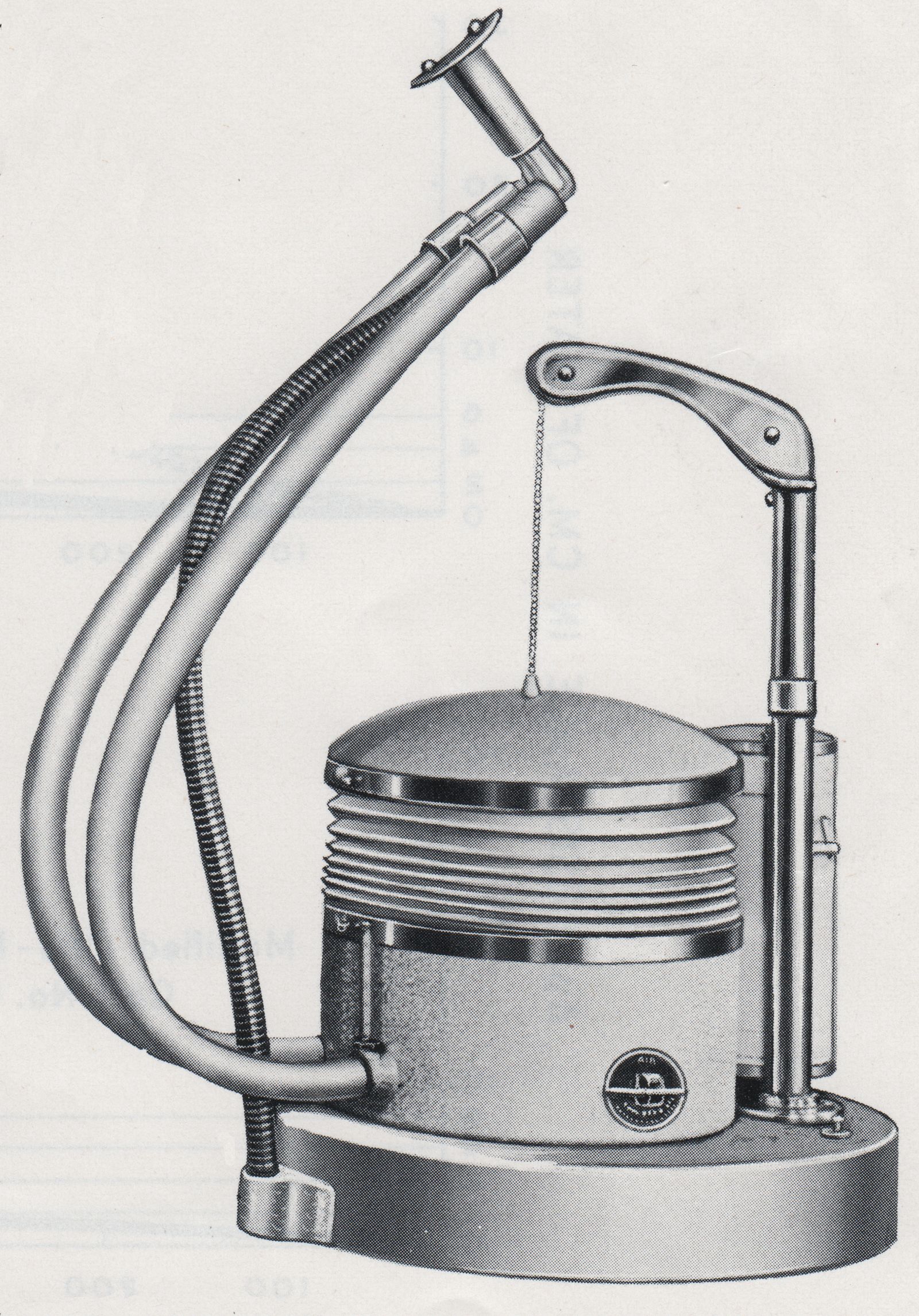
Collins Metabolex ,1966. A Collins basal metabolism system using a dry spirometer. From ‘A Catalog of Pulmonary Function Equipment and Accessories’, W. E. Collins Inc., page 17.
Collins 9 Liter Respirometer, 1967. From Clinical Spirometry, Instructions for the use of the Collins Respirometer and for calculation and interpretation of data in pulmonary function and basal metabolism testing. Warren E. Collins, Inc. 1967.
Collins 13.5 Liter Respirometer, 1967. From Clinical Spirometry, Instructions for the use of the Collins Respirometer and for calculation and interpretation of data in pulmonary function and basal metabolism testing. Warren E. Collins, Inc. 1967.
120 Liter and 350 Liter Collins Tissot Gasometer, 1967. From “Directions for operating a Collins chain-compensated gasometer”, Second Edition Cat. No. P-469. Warren E. Collins, Inc. May, 1967.
Collins Treadmill, 1967. 1-8 MPH treadmill for Stationary Exercise. From “Directions for operating a Collins chain-compensated gasometer”, Second Edition Cat. No. P-469. Warren E. Collins, Inc. May, 1967.
“This sturdy, yet easily portable, 1-8 MPH treadmill moves on 5” dia. ball-bearing casters. The optional “Electrolift” enables effortless inclination to 16 degrees (30%) with only the touch of a switch.”
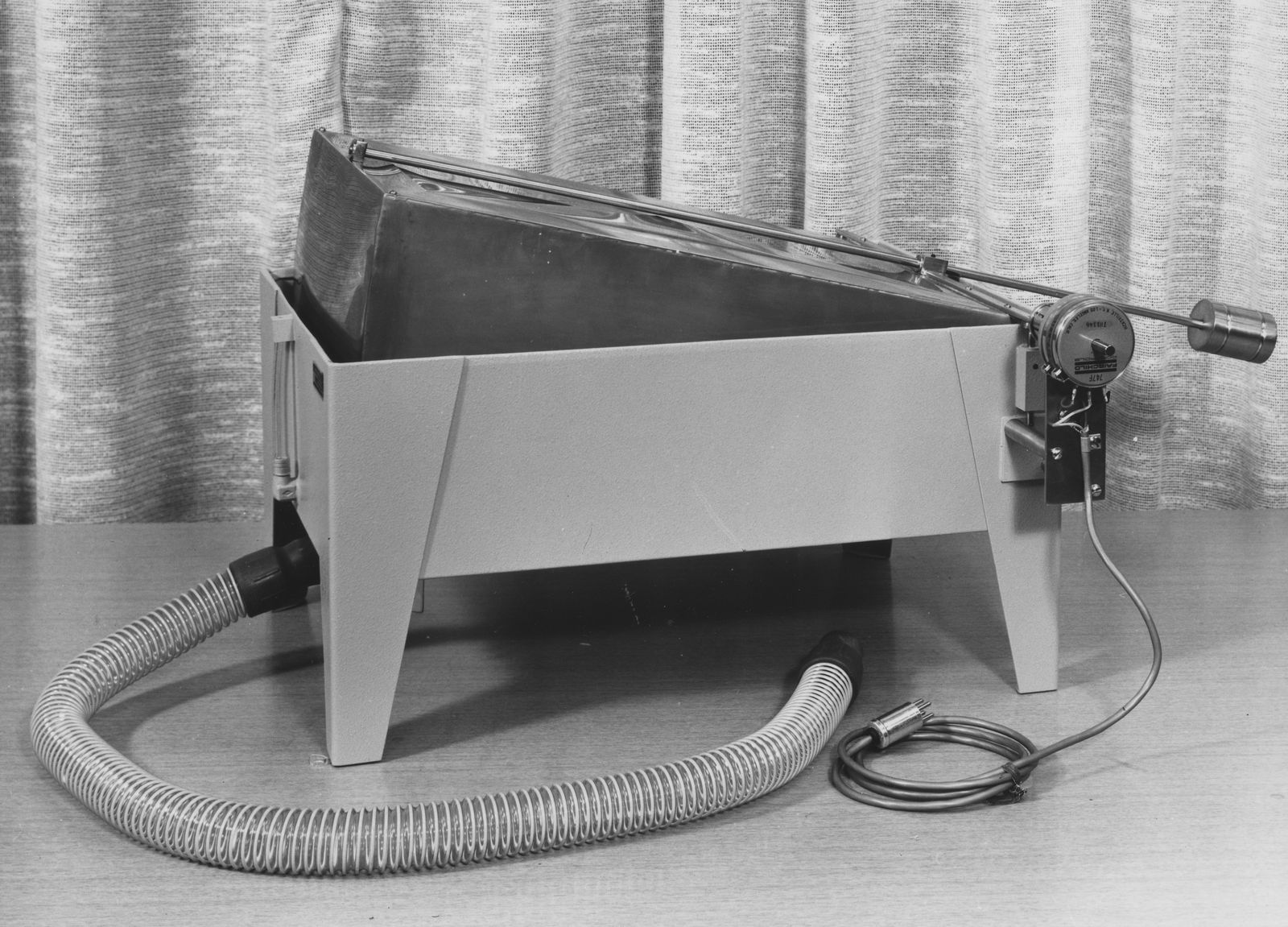
Collins 5 Liter Krogh Spirometer, 1967. From a publicity photo.
Collins water-seal Stead-Wells spirometer, 1968. From: Burton RM, Kozel WM, Penley RP, Ward GH, Chapman RS. Application and evaluation of portable field instruments for measuring Forced Expiratory Volume of children and adults in environmental health surveys. Environmental Health Perspectives, 1974; 8: 123-131. Page 124.
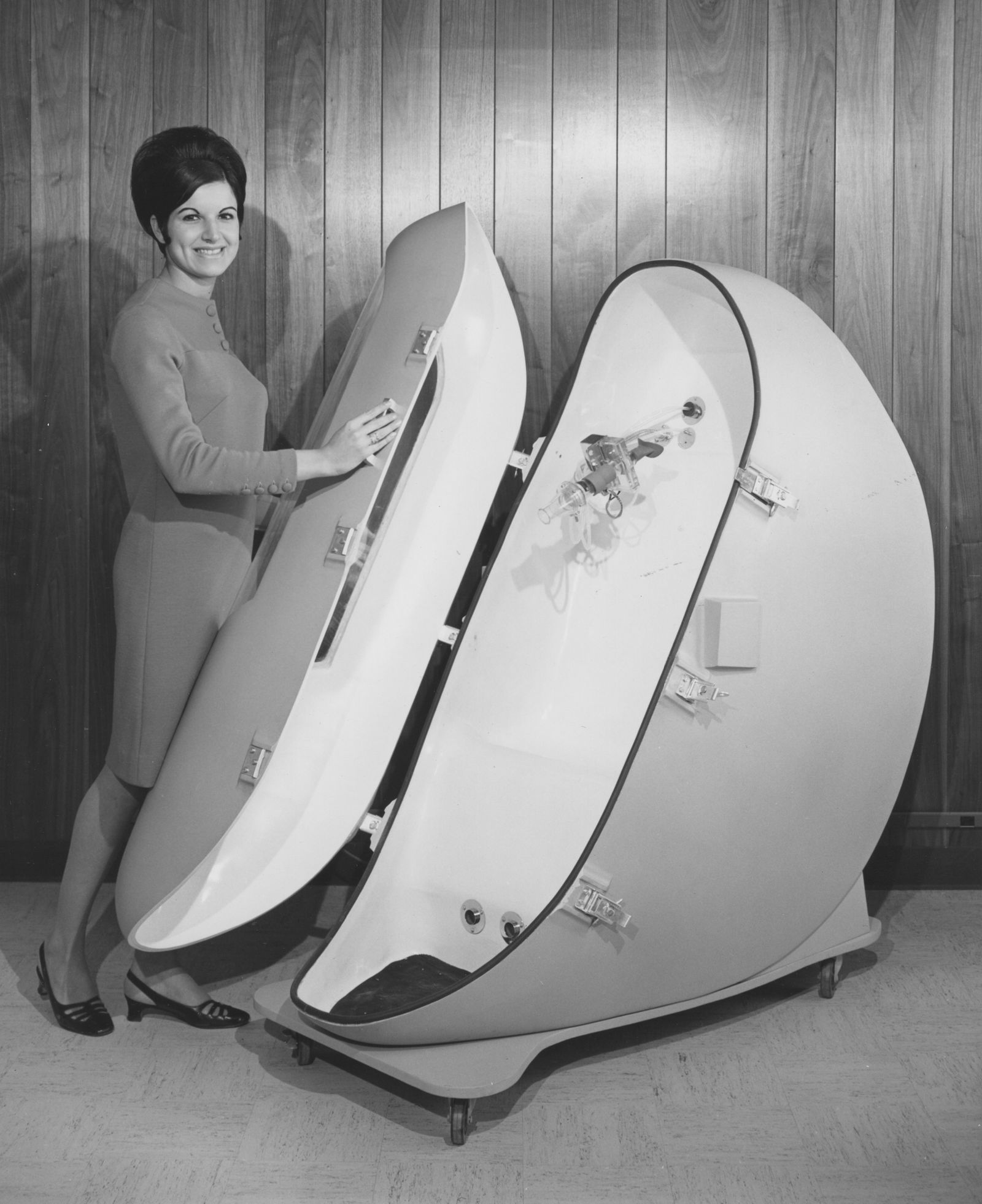
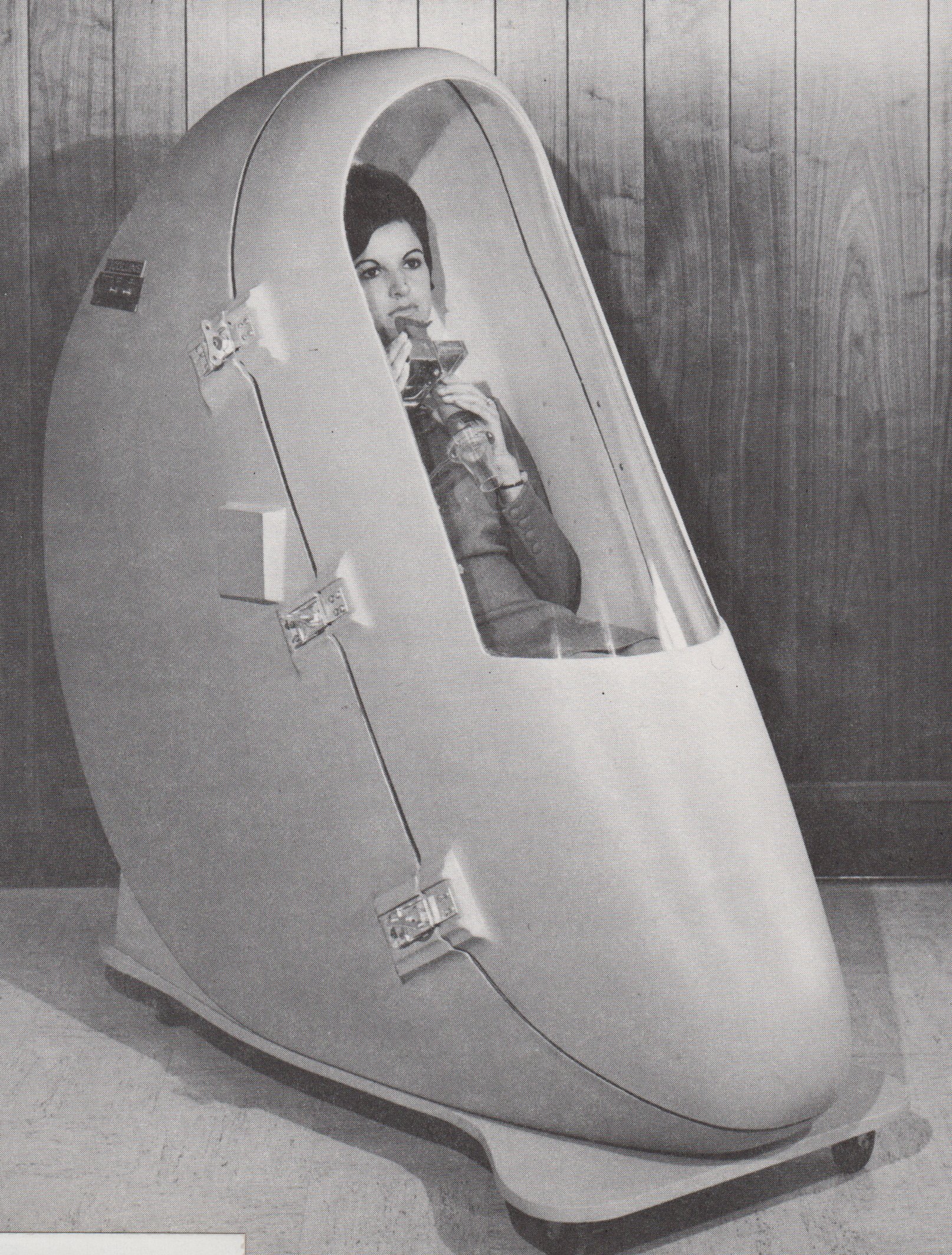
Fiberglass Plethysmograph, Collins, Model P-2506, 1969. From the 1969 Collins Equipment Catalog.
Collins Stead-Wells Spirometer, circa 1970. From Equipment Theory for Respiratory Care by Gary White, published by Cengage Learning, 2014, page 257.
Collins Survey Spirometer, circa 1970’s. Intended primarily for spirometry, some versions came with a helium analyzer and could be used to measure lung volumes. Found on McLemore Auctions website.
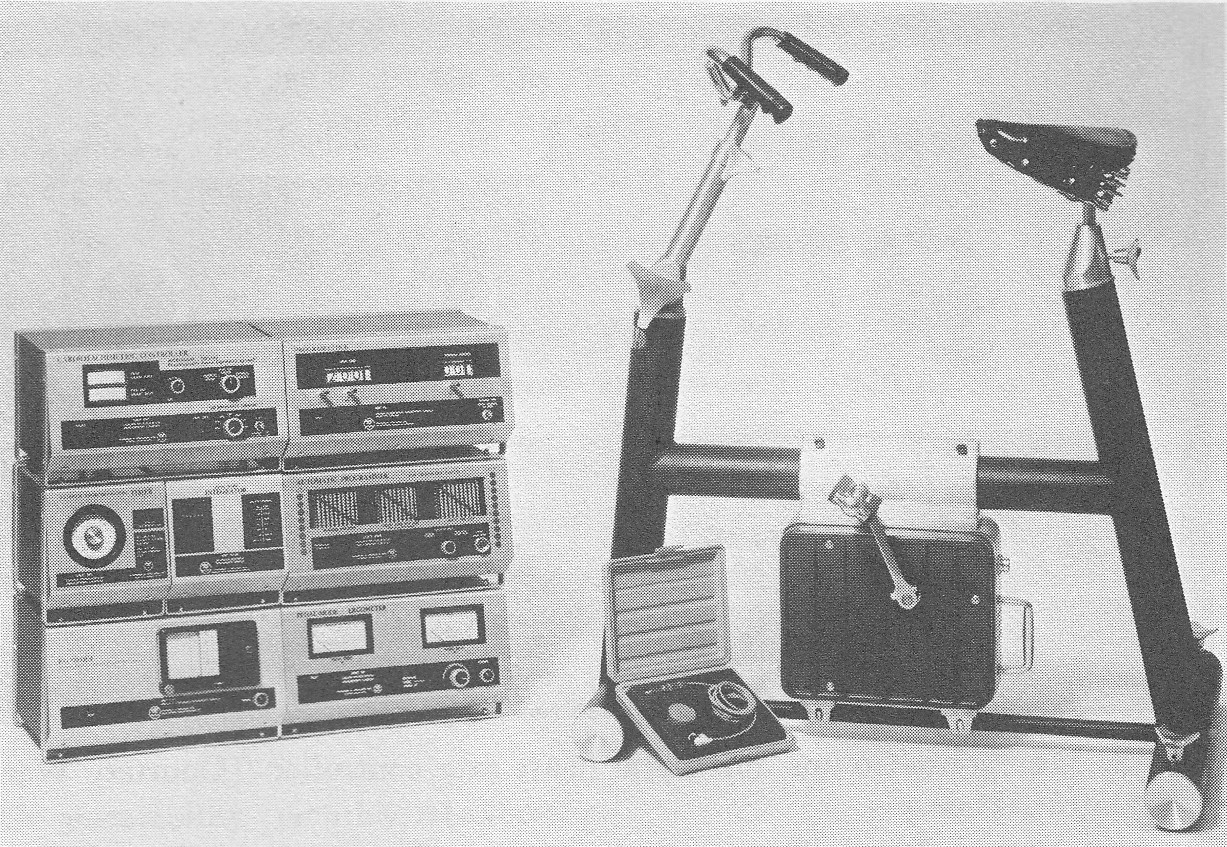
Collins Bicycle Ergometer, 1972. From “Laboratory manual for physiology of exercise”, by Laurence E. Morehours, Published by C.V. Mosby, 1972, page 127.
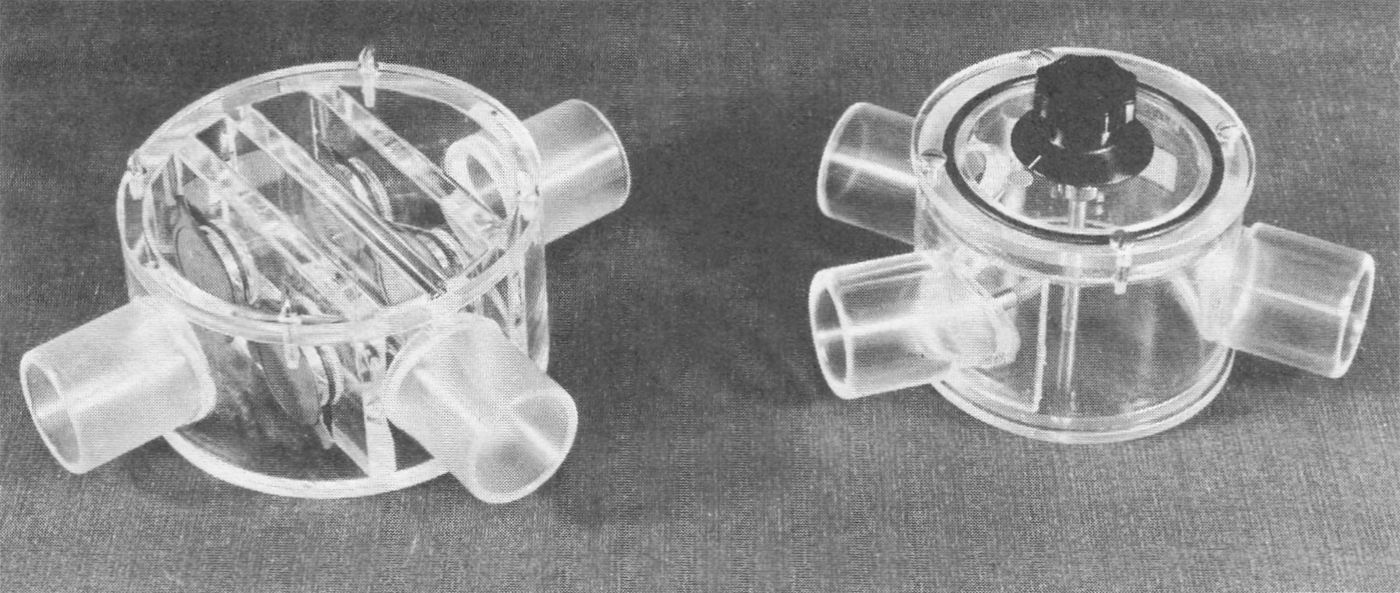
Collins Breathing Valves, 1972. From “Laboratory manual for physiology of exercise”, by Laurence E. Morehours, Published by C.V. Mosby, 1972, page 88.
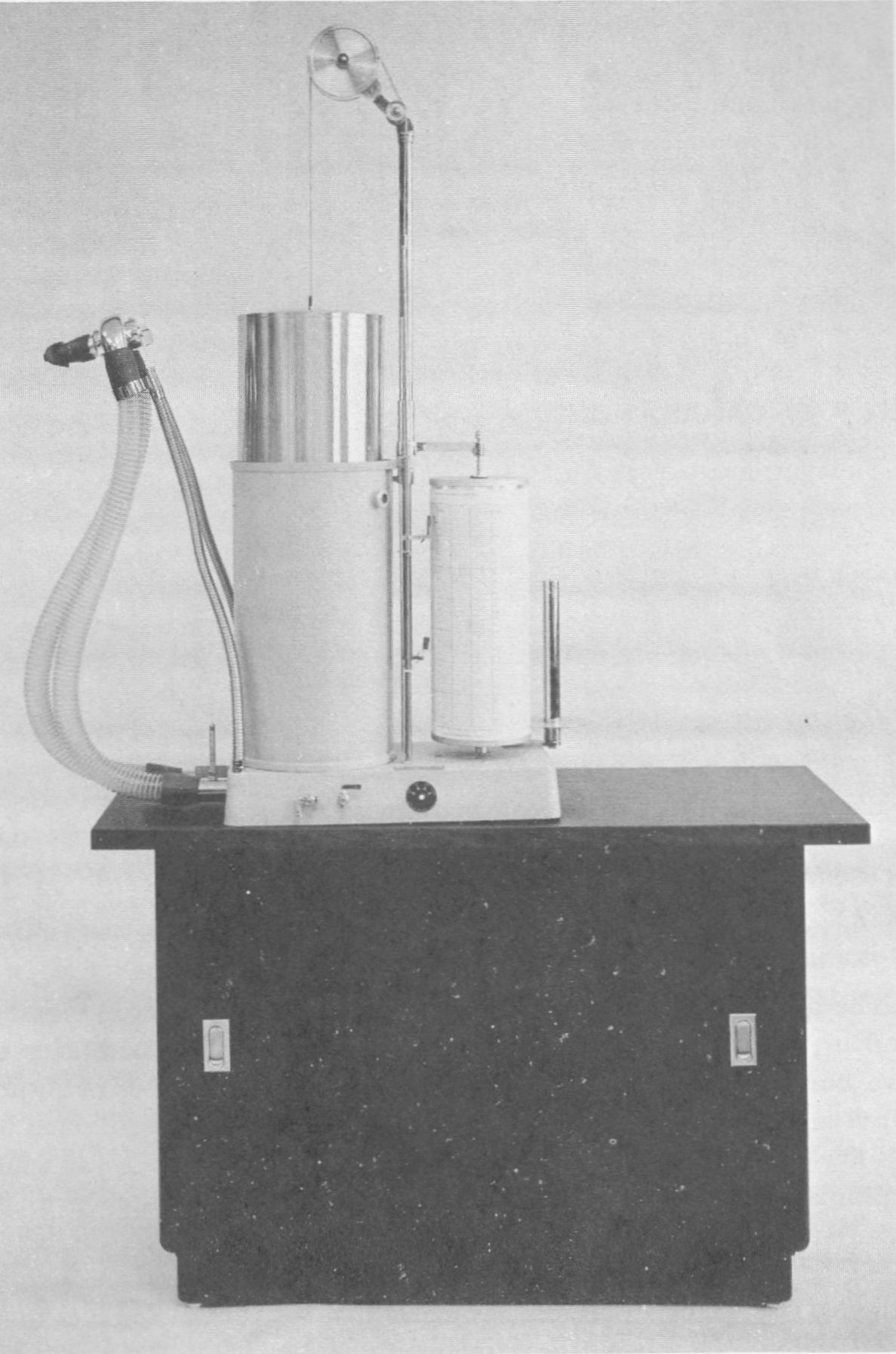
Collins 13.5 Liter Respirometer, 1972. From “Laboratory manual for physiology of exercise”, by Laurence E. Morehours, Published by C.V. Mosby, 1972, page 105.
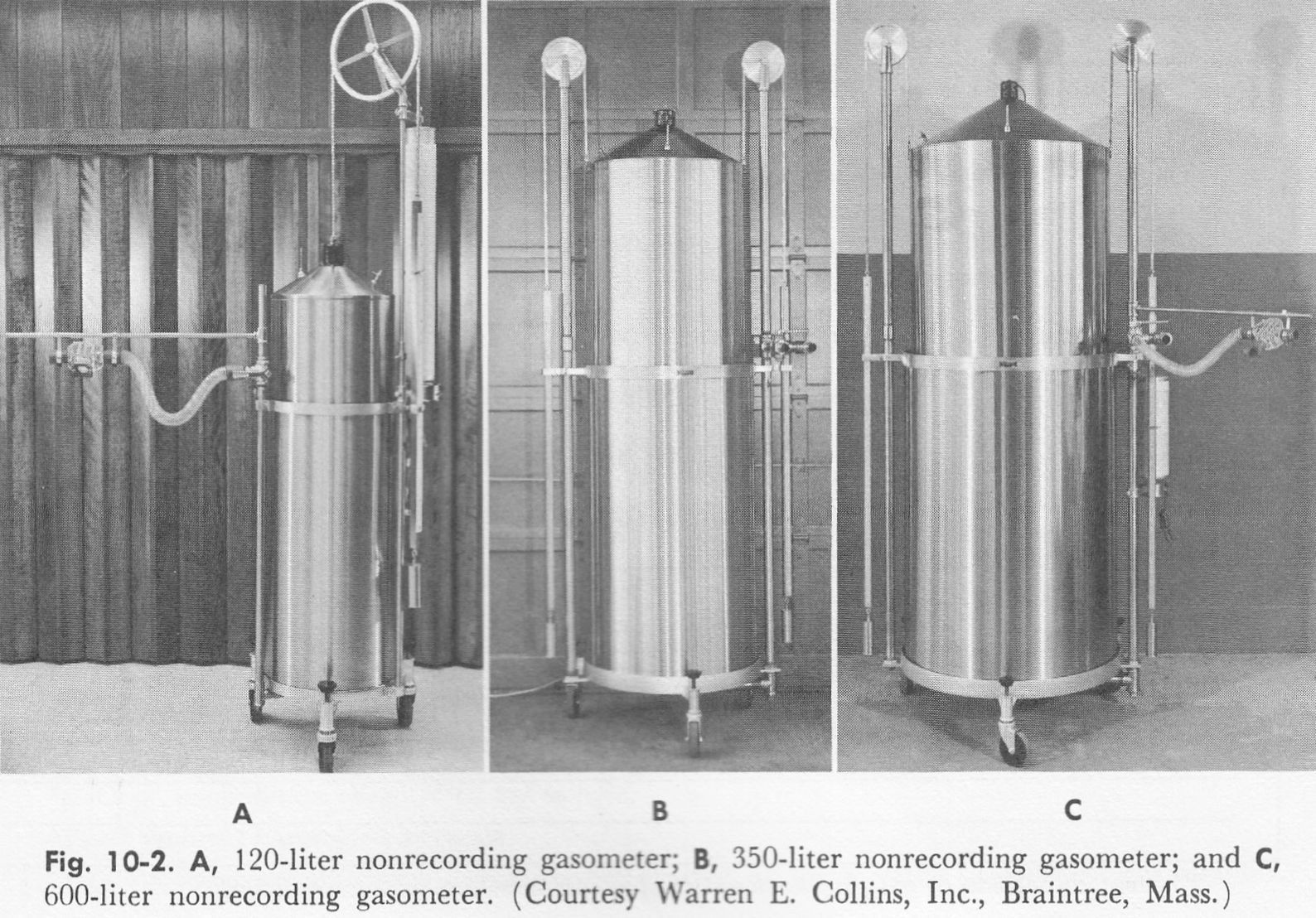
Collins Gasometer, 120 Liter, 350 Liter and 600 Liter, 1972. From “Laboratory manual for physiology of exercise”, by Laurence E. Morehours, Published by C.V. Mosby, 1972, page 87.
Collins Office Spirometer with Stand, circa 1975. A counter-weighted water seal spirometer. The main pen was attached to the counter-weight and drew a volume-time curve on graph paper attached to the kymograph drum. The secondary pen was attached to a mechanical integrator and was used for MVV tests. Photo found at a Pemed listing.
Collins Modular Lung Analyzer, 1970’s. Performed spirometry, MVV, helium dilution lung volumes, single-breath DLCO and steady-state DLCO. Photograph courtesy of Barbara A. Kerns
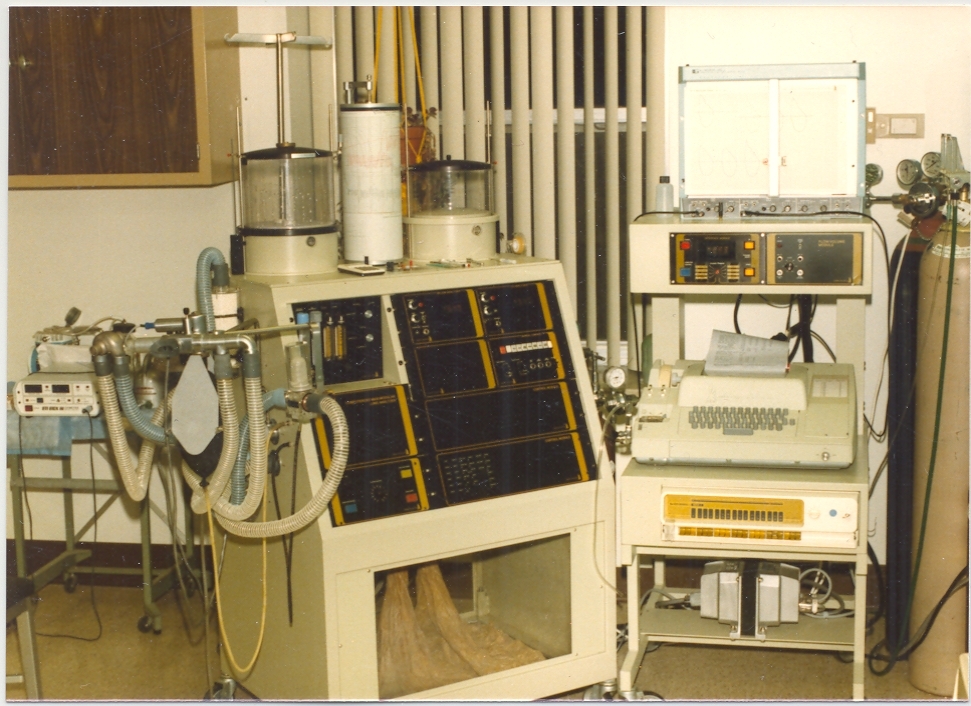
Collins Maxi-Modular System, late 1970’s. Photograph courtesy of James Sullivan, BA, RPFT, Supervisor, Pulmonary Laboratories, Memorial Sloan-Kettering Cancer Center was taken in 1984.
His description: “This system did both ssDLCO and sbDLCO. It has an N2 analyzer, but this wasn’t working when I started in the lab; we used He equilibration for FRC measurement. It used a teletype for data input and output (those things put out a lot of heat…), a Data General computer, complete with the front-panel DIP switches, and a HP X-Y recorder. ….. It was a good system to learn on, because while it was “computerized”, you could still write down He readings and perform your own calculations. The spirometry software (all programs were loaded into the computer through the teletype via a perforated paper tape; loading took about 45 min) was pretty limited, and there were many times I could get more accurate measurements by calculating the tracings off of the kymograph.”
“…the second spirometer bell (on the right) was used for the inspired sbDLCO gas. The bell on the left was the primary spirometer, where spirometry, He equilibration and the volume measurements for both DLCO tests were done.”
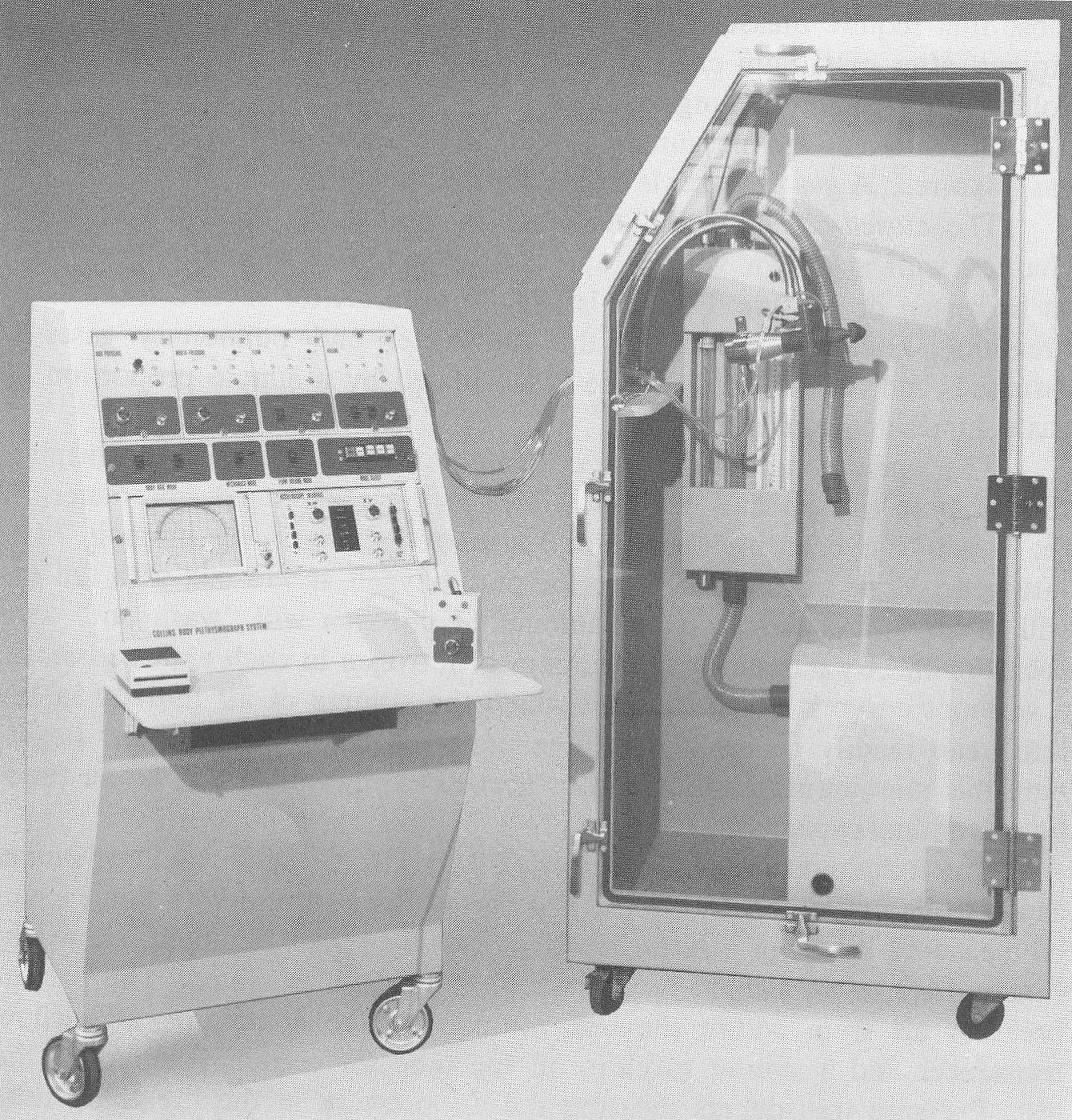
Collins Plethysmograph, 1976. From Medical Instrumentation for Healthcare, by Cromwell L, Arditti M, Weibell FJ, Pfeiffer EA, Steele B, Labok J. Published by Prentice-Hall, 1976. Page 266.
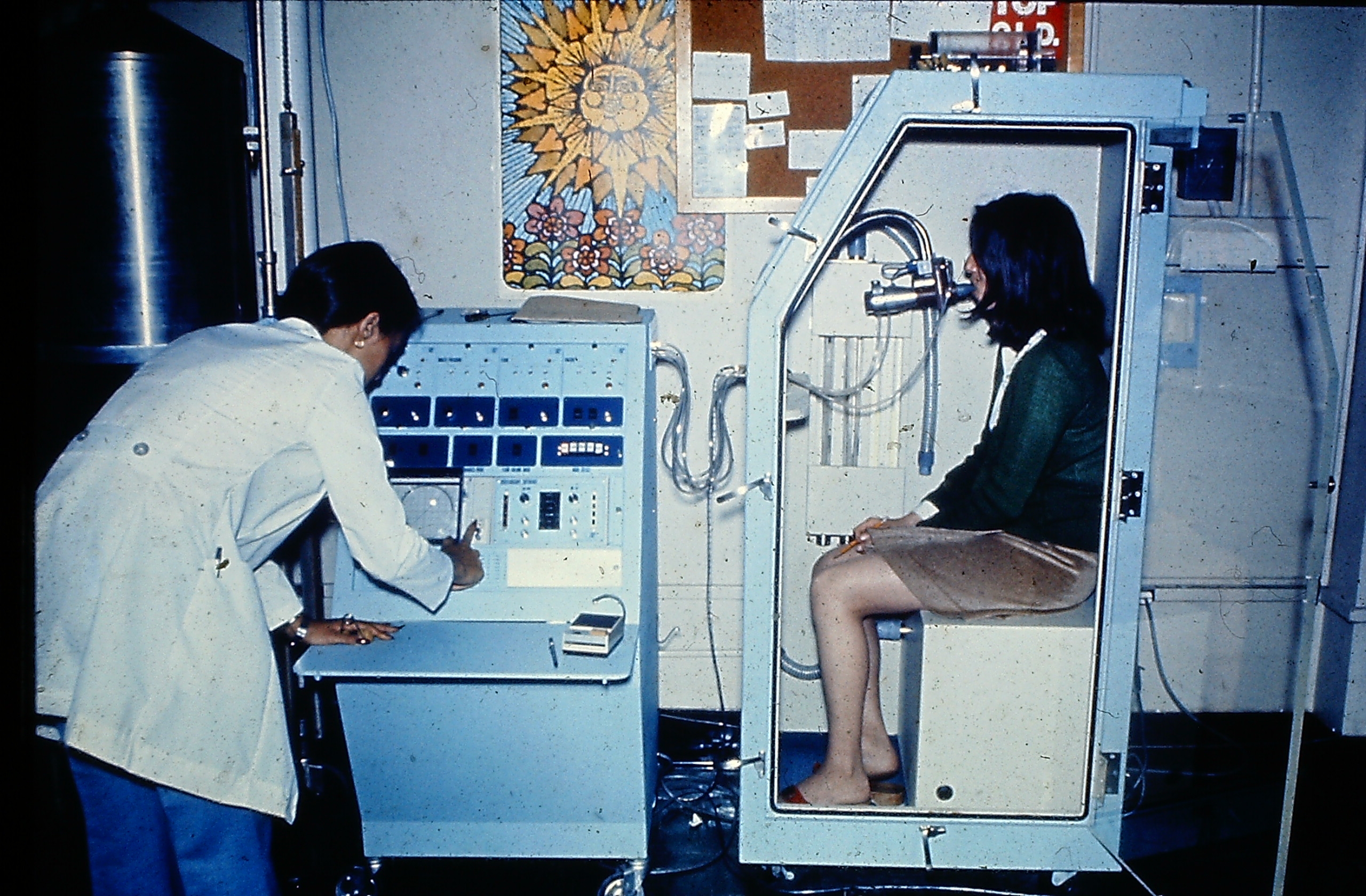
Collins Plethysmograph, circa 1980. Photo courtesy Carl O’Donnell.
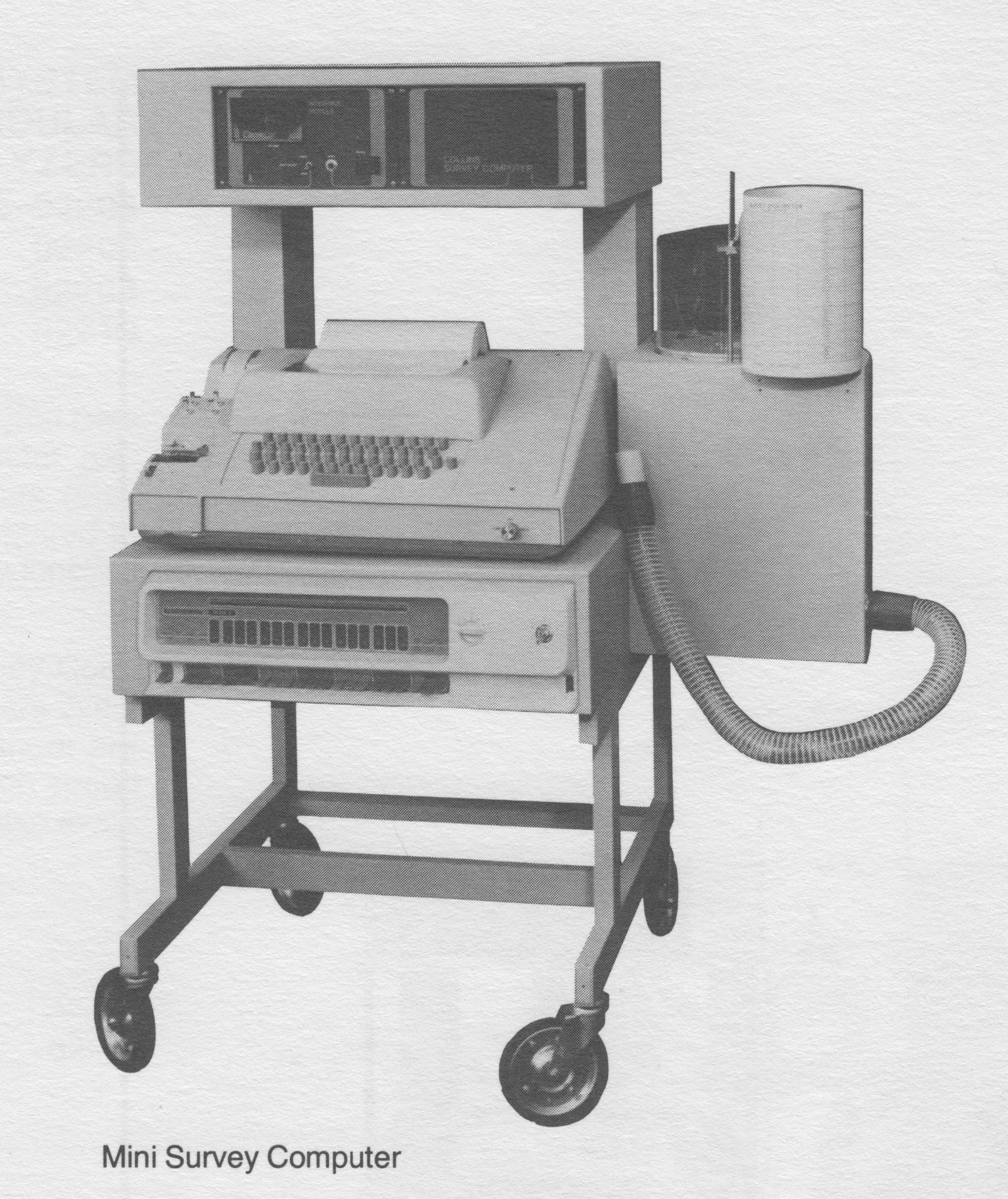
Collins Mini Survey Computer System, circa 1978. Stead-Wells spirometer with the Mini Survey Computer system. Computer came with 8K of memory and a teletype unit. Programs were loaded using punched paper tape. Video display and floppy disk memory unit were optional extras. From ‘Collins’ Catalog of Pulmonary Function Testing Instruments”, undated by likely from around 1978, page 1-25.
A Collins 120 liter Tissot spirometer. Probably manufactured in the 1970’s or 1980’s. Shown empty and partially filled. Found in the course material for an exercise physiology class on a shared university website.
Collins Survey Spirometer, 1981. From: Instruction Manual for the Collins Survey Spirometer, Manual No. 22168, Third Printing May 1981.
1.A. DESCRIPTION
A.1. The Survey Spirometer is a precision, calibrated, water-seal spirometer which may be used for the performance of ventilation tests.
A.2. Figure 1 shows the basic equipment layout with all the major components identified. The spirometer body is constructed of copper while a rugged cast aluminum base supports the unit. Lightweight plastic is used for the spirometer bell.
1.B. MECHANICAL SPECIFICATIONS
B.1. Dimensions: Length: 16-18, Width: 12, Height: 20, Shipping Weight: 32 pounds, Net Weight: 16 pounds, Water capacity: 1 quart, approximately.
“B.2. Spirometer Performance Specifications:
Kymograph: single speed, 1920 mm/min, Spirometer capacity: 8 liters, Response: +/- 1% 0-140 CPM, Calibration Accuracy: +/- 1% for life of bell. Safety: UL Listed 544
Collins RS, circa 1983: The Collins RS was capable of performing spirometry and helium dilution lung volumes. It came with an IBM PC (128K RAM, dual 320K floppy disk drives), Apple II (64K RAM, dual 5-1/4″ floppy drives) or a dedicated microprocessor controller/calculator (comprehensive keyboard, 40 character line printer, 25K ROM). Photo is from a sales brochure courtesy of James Sullivan, BA, RPFT, Supervisor, Pulmonary Laboratories, Memorial Sloan Kettering Cancer Center.
Collins DS-421, 1983. Performed spirometry, helium dilution lung volumes and single-breath DLCO. The Microprocessor unit keyboard “groups keys in a logically arranged manner to promote rapid familiarity and simplified keyboard entry of patient data.” It also incorporated “a row of LED’s at the right of the keyboard which illuminates each time an entry is required. When a key is depressed, the computer answers with a short tone and responds with a longer tone whenever an incorrect entry is made.” Photo is from a sales brochure courtesy of James Sullivan, BA, RPFT, Supervisor, Pulmonary Laboratories, Memorial Sloan Kettering Cancer Center
Collins DS-520, 1984. Performed spirometry, helium dilution lung volumes and single-breath DLCO. Included an Apple II computer with 48K RAM, dual floppy disk drives and a monochrome monitor. Photo is from a sales brochure courtesy of James Sullivan, BA, RPFT, Supervisor, Pulmonary Laboratories, Memorial Sloan Kettering Cancer Center
Collins S-520 Spirometer, 1984. Used a Stead-Wells spirometer and Included an Apple II computer with 48K RAM, dual floppy disk drives and a monochrome monitor. Photo is from a sales brochure courtesy of James Sullivan, BA, RPFT, Supervisor, Pulmonary Laboratories, Memorial Sloan Kettering Cancer Center
Performed spirometry, helium dilution lung volumes and single-breath DLCOs. Included an IBM PC XT with 256K RAM, dual 5-1/4″ floppy disk drives and a color monitor. Photo is from a sales brochure courtesy of James Sullivan, BA, RPFT, Supervisor, Pulmonary Laboratories, Memorial Sloan Kettering Cancer Center
Collins Eagle II, 1984. Photo is from a sales brochure courtesy of James Sullivan, BA, RPFT, Supervisor, Pulmonary Laboratories, Memorial Sloan Kettering Cancer Center.
Collins DSII Pulmonary Function Testing System, circa 1986. From: http://www.museevirtuel-virtualmuseum.ca/Search.do?ig=on&R=IMAGES_ACPO11706&lang=en
Collins GS Pulmonary Function testing system. Initially manufactured in the early 1990’s. It was able to perform spirometry, helium dilution FRC and DLCO. Used a rolling-seal volume displacement spirometer. Found at a Pemed listing.
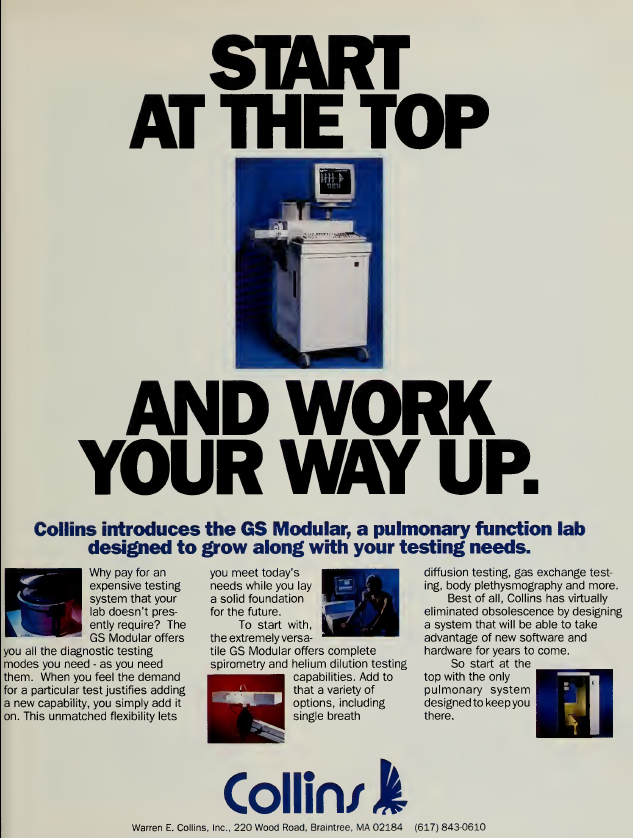
Collins GS Advertisement, 1993. Found in Respiratory Care, 1993, November, page 1285.
Collins Infant Plethysmograph, circa 1995. Found at MedUsed.com.

PFT History by Richard Johnston is licensed under a Creative Commons Attribution-NonCommercial 4.0 International License.
